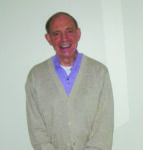
By Bill Fiess and Pam Esteven
In a recent study, I noted that some form of the Greek word family agapaō (verb, noun, participle, adjective) occurs in every single book of the NT. As many Grace in Focus readers know, agapaō and its various forms denote love in the highest sense of the word, both morally and socially. The word is used to express the unconditional love God has for people (John 3:16); it is also used by the NT writers to express the sacrificial love believers should have for one another (John 13:34) as well as the love believers should have for Jesus (see John 8:42) and for God (1 John 4:19).
Agapaō also expresses the love which the Father has for the Son (John 15:9), the love the Son has for the Father (John 14:31), the love the Son has for believers (John 13:34), and the love the Father has for believers (John 17:23).
You may have noticed that the Scripture references in the above paragraphs are all from John, either his Gospel or his first epistle. This comes as no surprise when we consider that two of John’s books lead all other NT books in the number of uses of some form of agapaō: 1 John contains fifty-one occurrences, and John’s Gospel contains forty-four.
John’s use of agapaō in its various forms in his Gospel are concentrated in his account of the Upper Room Discourse (John 13-17) which contains a whopping 70% (31 out of 44) of the word’s occurrences in his Gospel. The staggering majority of the uses of agapaō in the Upper Room Discourse is significant because this is Jesus’ final pre-cross teaching to His disciples. The lesson is about love.
As I study John’s writings, I have observed that 1 John appears to be an expansion of the Upper Room Discourse, which addresses the issue of abiding in Christ. Both 1 John and the Upper Room Discourse in John’s Gospel emphasize the importance of love in the life of a believer. We can therefore conclude that love is the outstanding characteristic of one who is abiding in Christ. Do the math: the greatest of these is love.
____________________
Bill Fiess teaches math in Virginia. Pam Esteven is an editor and lives in Baton Rouge.

